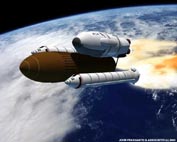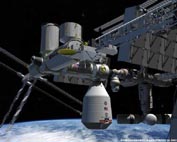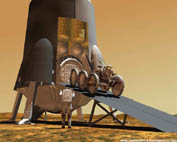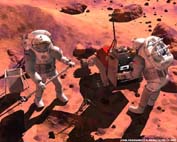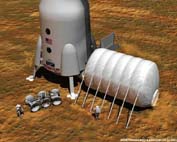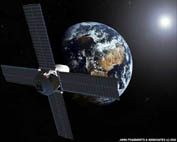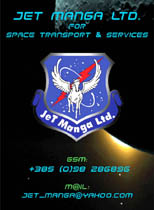
| Astronautika | |||||||||||
|
Human Mars landing mission
for 2033 Dr.sc. Zlatko Rendulić
CONTENTS 1. GENERAL CHARACTERISTICS OF MARS 1.1. Mars, the most Earth-like planet in
the Solar system 1.2. Mars: Size, Mass and Density 1.3. Martian Orbit, Day and Magnetic Field
1.4. Properties of the
Martian atmosphere and surface temperature 2. REMOTE SENSING AND SPACE OBSERVATIONS
OF MARS 2.1. Remote sensing of the Martian surface
2.2. Space observations of
Mars 3. THE MOONS OF MARS 4. WHY HAS MARS BEEN SELECTED AS THE FIRST
PLANET FOR MANNED MISSIONS 4.1. Scientific Objectives of Mars
Exploration 4.2. Mars Exploration as a Technology
Driver 4.3. Benefits from Mars Exploration 4.4. Existence of past or
present life on Mars 5. SELECTION OF THE EARTH-MARS SPACESHIPS
TRAJECTORIES 5.1. General considerations 5.2. Motions of the Planets Earth-Mars 5.3. General Overview of Trajectory
Designs 5.4. Abort and Rescue
Possibilities 6. PROPULSION SYSTEMS FOR MANNED MARS
MISSIONS 6.1. General Considerations 6.2. Cryogenic Propulsion 6.3. Nuclear Thermal Propulsion 6.4. Nuclear Electric Propulsion 6.5. Other Propulsion Systems for Mars
Cargo Missions 6.6. Advanced space
propulsion in not too distant future 7. WHY AN INTERNATIONAL MARS PROGRAM? 7.1. Economic and Cost-Sharing
Considerations 7.2. Scientific and Technological Impact
of an International Mars Program 7.3. Mars Program Contribution to
Political Stability 7.4. National Alternatives to
an International Mars Program 8. HUMAN FACTOR, LIFE SUPORT SYSTEM AND
PHYSIOLOGICAL PROBLEMS IN 8.1. Introduction 8.3. Radiation dose limits and the harmful
effects of radiation 8.4. Life Support System 8.5. Hypo-gravity effects - Artificial Gravity 8.6. Isolation and Confinement Effects on crew
members 8.7. Potential Medical challenge from
long-duration space flight 8.8. Habitability and Management of Crises
(2.dio, 3. dio) 9. SPACECRAFT FOR MANNED MARS MISSIONS 9.1. Description 9.2. Health and Safety Control 9.3. Propulsion systems 9.4. Shielding 9.5. Mars Excursion Module 9.6. Atmospheric Entry and
Entry Dynamics 10. FIRST MARS MANNED BASE DESIGN 10.1. Some early plans of the manned Mars
missions 10.2. Sub-phase of the self-sufficient
Base on Mars 10.3. Spacesuit for Mars
explorers 11. MARS HUMAN EXPANSION PHASE 11.1. General Considerations 11.2. Mars Human Expansion Phase 11.3. Scientific knowledge 11.4. Engineering 11.5. Colony Missions 11.6. Terra-forming of Mars
in a distant future 12. TIME FRAME AND COST FOR A HUMAN MARS
LANDING MISSION 12.1. Methods for forecasting the
medium-term future 12.2. The recent uncertainties in
prediction of the manned Moon and Mars missions 12.3. Political and Economic Consideration
12.4. Estimated costs of a manned Mars
mission 12.5. Timeframe for a human Mars landing
mission
|
|||||||||||
|
|
